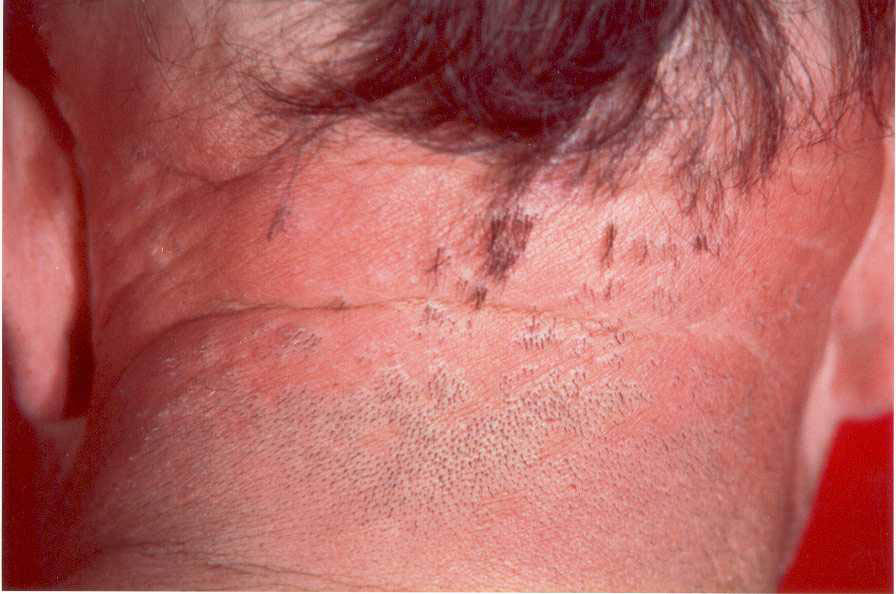follicular lichen planus (LP) on the trunk and extremities, was
described by Piccardi in 1914, to which he gave the name
"cheratosi spinulosa".
Graham-Little published a similar case in
the successive year of a 55 year old woman, referred by Lasseur of
Lausanne,Switzerland. LASSUEUR PICCARDI GRAHAM LITTLE Syndrome is a rare case where are associated "Cicatricial alopecia and lichen planus follicularis" come together small confluent patches of progressive scarring alopecia, appearance of the lichen planus follicularis with follicular keratosis and noncicatricial alopecia of the axilae and pubes.

Patches on the scalp are atrophic and cicatricial.
Pathophysiology: The disease is considered a variant of Lichen Planus consisting of follicular LP of the body and/or scalp, and lichen planopilaris of the scalp. Comparable to LP, the disease is probably the result of a T-cell–mediated immune response of unknown etiology.
Histology of cicatricial alopecia of the scalp and follicular papules: In the first stage, inflammatory perifollicular lichenoid infiltrate is watched. Consequently the inflammation in this area can lead to a cicatricial alopecia. In the final stage of the disease, atrophic dermis and fibrosed and empty hair shafts can be observed.
Direct immunofluorescence studies have reported immunoglobulin
M, immunoglobulin G, and, sometimes immunoglobulin A at the
hair follicle infundibulum and isthmus. Follicular papules, comprise lichenoid lymphocytic infiltrate in the upper dermis,
hyperkeratosis and focal hypergranulosis, acanthosis, and
dyskeratotic keratinocytes.
Definite treatments have not been reported for Lassauer-Piccardi-
Graham-Little Syndrome. Therefore these patients tend to be
treated exclusively empirically.
(Abstract)
Prof. Camillo O. Di Cicco, MD "Member of DNA Repair Interest Group".






Comments